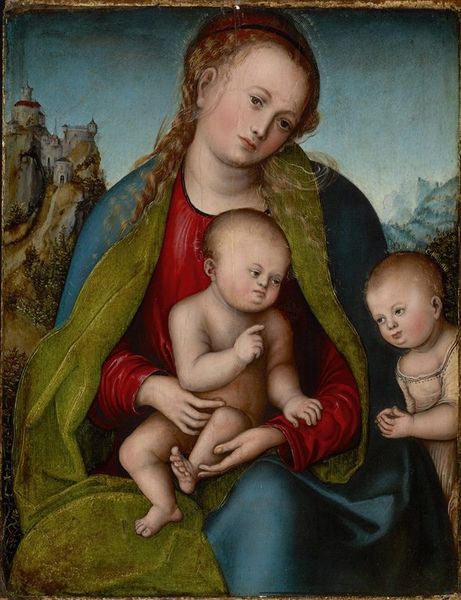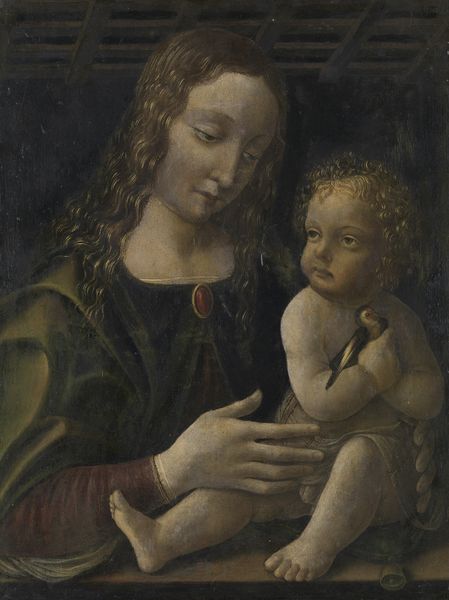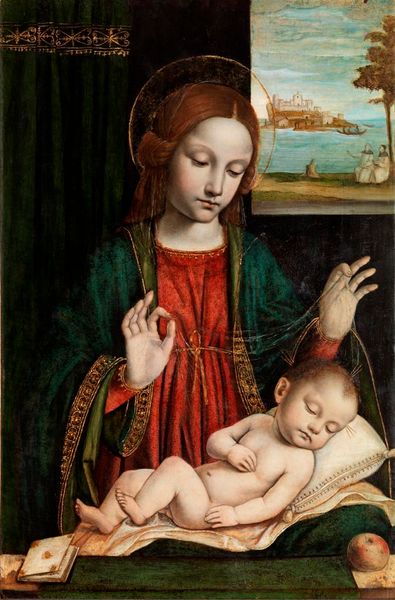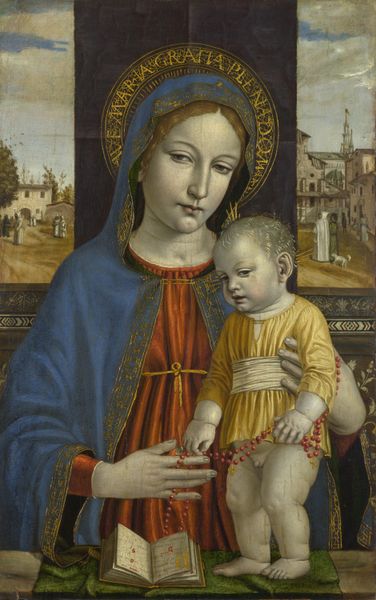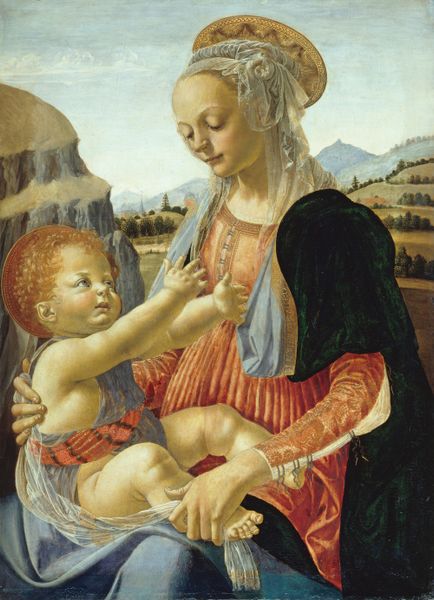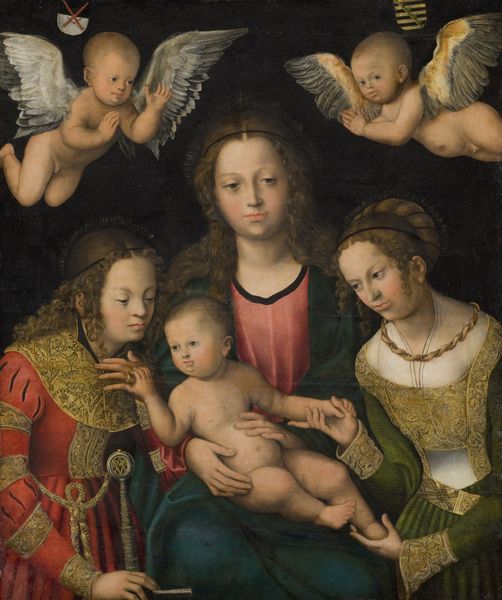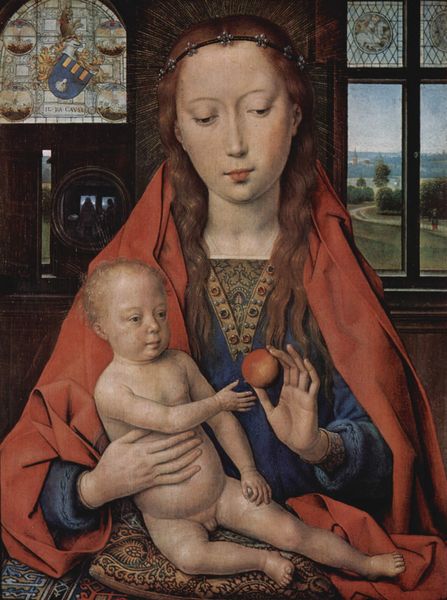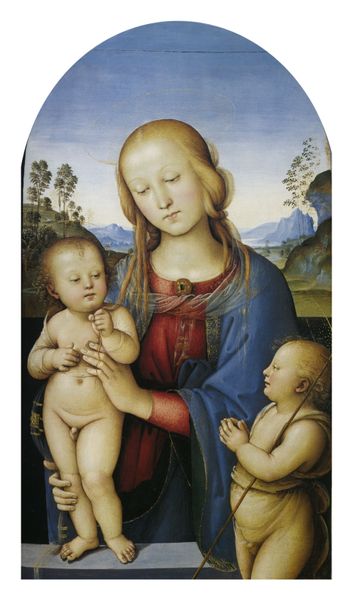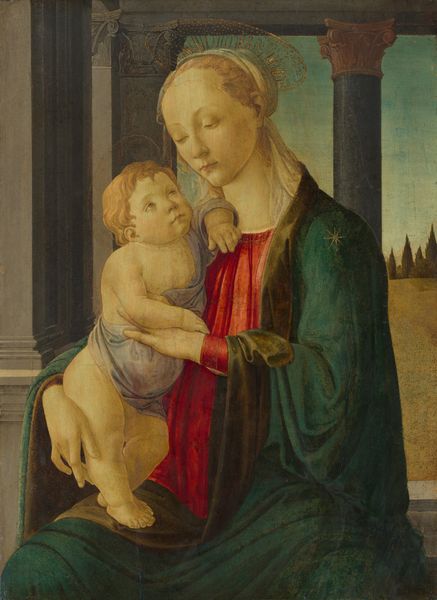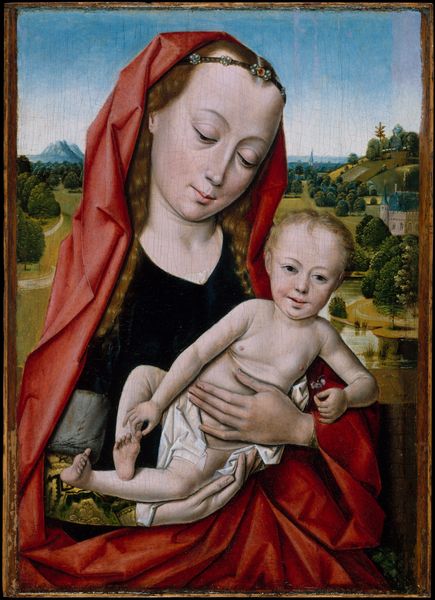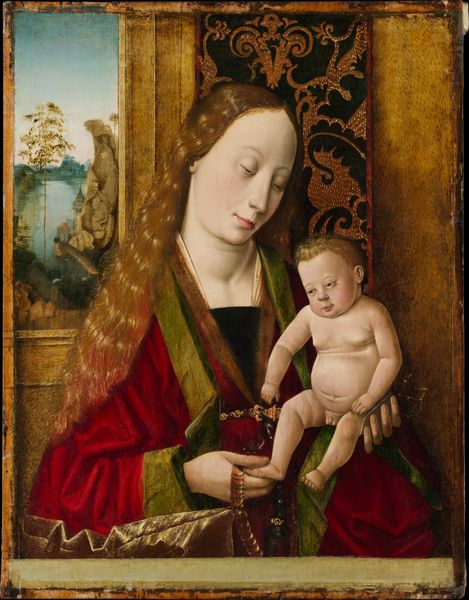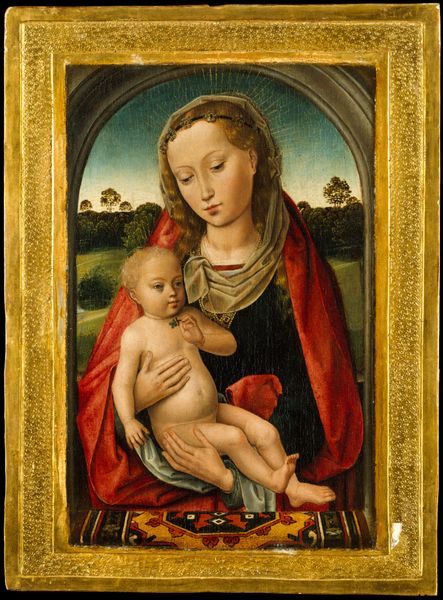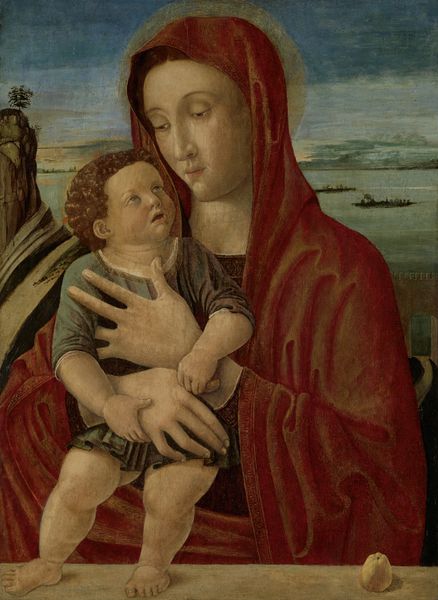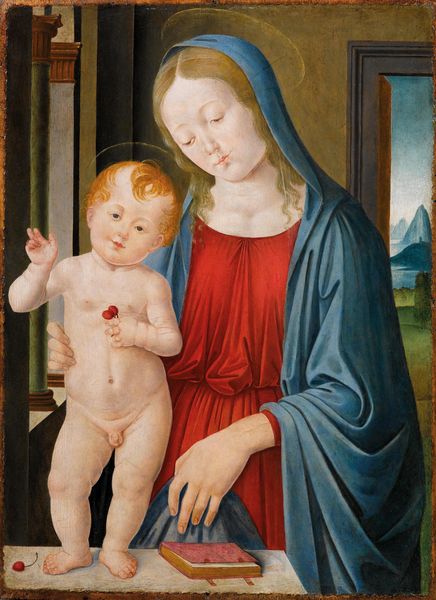
Virgin and Child Adored by the Infant St John 1512 - 1514
0:00
0:00
painting, oil-paint, wood
#
portrait
#
painting
#
oil-paint
#
figuration
#
11_renaissance
#
wood
#
northern-renaissance
Dimensions: 36.5 cm (height) x 27.5 cm (width) (Netto), 67 cm (height) x 58.5 cm (width) (Brutto)
Curator: Standing before us, we have Lucas Cranach the Elder’s “Virgin and Child Adored by the Infant St John,” painted between 1512 and 1514, a quintessential piece of the Northern Renaissance, rendered in oil on wood. Editor: It's strikingly austere. The almost severe expressions contrast so sharply with the tender subject matter. The dark background really isolates the figures, focusing all our attention on their faces and gestures. Curator: Indeed, the figures command attention, don’t they? Cranach was working within a specific theological and artistic framework. He was a court painter for the Electors of Saxony, key players in the Protestant Reformation, so his imagery reflects that shift. Note the lack of overt idealization of the Virgin. It's a more human representation, aligned with Reformation ideals. Editor: I find the grapes that the Christ Child is holding especially intriguing. It’s a very deliberate choice. Are we meant to interpret that as symbolic? Curator: Absolutely. The grapes would have been immediately understood by viewers of the time as a reference to the Eucharist and the blood of Christ. The painting skillfully combines familial intimacy with potent religious symbolism. Editor: Given Cranach's context, does this understated portrayal of Mary challenge the powerful image of the Virgin that the Catholic Church had cultivated? I am thinking about the Reformation and challenges to the institution’s control over sacred images. Curator: Exactly. It's a simplification, a demystification, even. The Virgin is presented more as a maternal figure, less as an untouchable divine icon, bringing the religious experience closer to the everyday lives of the laity. Cranach really mastered visual communication for this transition period in religious history. Editor: And there's that faint, knowing sadness in Mary's eyes. Perhaps that alludes to the inevitable destiny awaiting the Christ Child. It complicates the serenity, giving depth to what otherwise might be a straightforward depiction. It encourages you to ponder both her maternal joy and her anticipated sorrow. Curator: A poignant reading, connecting personal emotion with a grander religious narrative. Studying Cranach's "Virgin and Child," is fascinating precisely because it reveals this tension between artistic tradition and religious reform. Editor: It invites conversations about the Reformation, motherhood, and the power dynamics embedded within religious imagery—themes that continue to resonate.
Comments
No comments
Be the first to comment and join the conversation on the ultimate creative platform.
